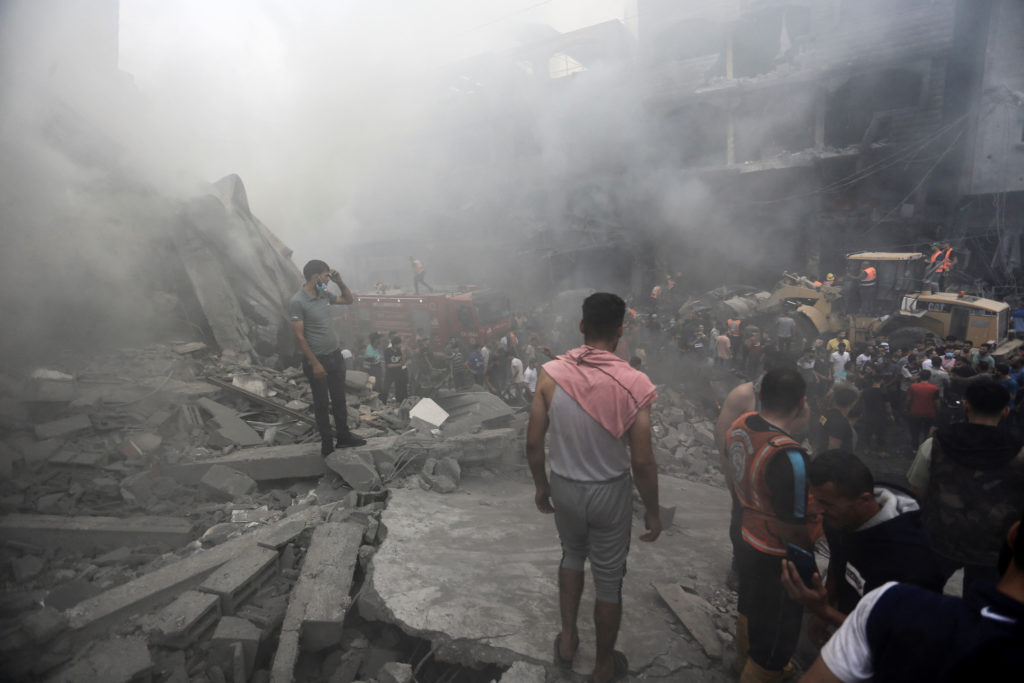In the face of escalating military action from Israel, the Iranian regime finds itself cornered like never before, 46 years after the revolution that solidified its rule. Tensions have heightened as Israel launched a series of aggressive strikes targeting key Iranian facilities, notably the Natanz nuclear site, amidst growing domestic disapproval towards the regime's oppressive governance and economic mismanagement.
At the helm of Iran remains 86-year-old Ayatollah Ali Khamenei, effectively the face of the conservative establishment and custodian of the revolution, who has ruled for 36 years. Yet, as the country experiences mounting turmoil, his leadership appears increasingly detached from the aspirations of a youthful population yearning for change. Over the last week, hostilities have resulted in significant casualties, leaving at least 224 civilians dead as citizens flee from affected areas, all while Iranian missiles retaliate against Israeli targets.
Experts liken the current state of the Islamic Republic to the waning days of the Soviet Union. “The Islamic Republic is a rotten tooth waiting to be plucked,” observed Karim Sadjadpour, an expert at the Carnegie Endowment for International Peace, highlighting the regime's vulnerability. Khamenei's previous confrontations with public unrest, notably the protests following a disputed 2009 election, revealed his willingness to resort to extreme measures to maintain control. While he emerged from that crisis with power intact, the resilience of the Iranian populace warrants a re-examination of the regime's strength.
The ongoing crisis transforms not only the regional dynamics with Israel but also tests the limits of the regime's endurance. As the bombs rain down, there is a palpable tension in the air—will this be the catalyst for an essential shift in power or merely another chapter in the enduring story of Iran's struggle against its own authoritarian rule?
At the helm of Iran remains 86-year-old Ayatollah Ali Khamenei, effectively the face of the conservative establishment and custodian of the revolution, who has ruled for 36 years. Yet, as the country experiences mounting turmoil, his leadership appears increasingly detached from the aspirations of a youthful population yearning for change. Over the last week, hostilities have resulted in significant casualties, leaving at least 224 civilians dead as citizens flee from affected areas, all while Iranian missiles retaliate against Israeli targets.
Experts liken the current state of the Islamic Republic to the waning days of the Soviet Union. “The Islamic Republic is a rotten tooth waiting to be plucked,” observed Karim Sadjadpour, an expert at the Carnegie Endowment for International Peace, highlighting the regime's vulnerability. Khamenei's previous confrontations with public unrest, notably the protests following a disputed 2009 election, revealed his willingness to resort to extreme measures to maintain control. While he emerged from that crisis with power intact, the resilience of the Iranian populace warrants a re-examination of the regime's strength.
The ongoing crisis transforms not only the regional dynamics with Israel but also tests the limits of the regime's endurance. As the bombs rain down, there is a palpable tension in the air—will this be the catalyst for an essential shift in power or merely another chapter in the enduring story of Iran's struggle against its own authoritarian rule?



















